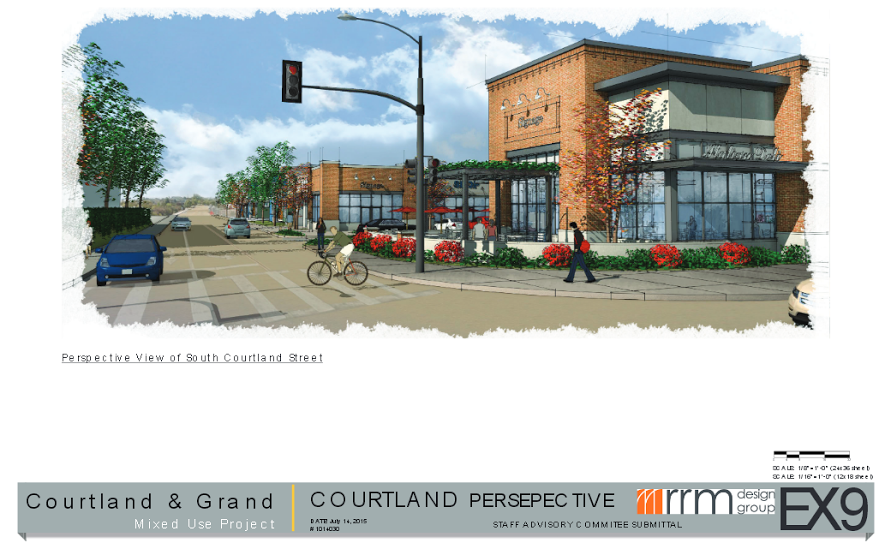Tompkins’ Arroyo Grande project to be reheard
September 30, 2015
OPINION by JULIE TACKER
The public is invited and encouraged to attend the Special Meeting of the Arroyo Grande City Council on Oct. 8 at 6 p.m. to reconsider the action taken Sept. 8, when the council approved the long-controversial Courtland and Grand “mixed use” project proposed by NKT Commercial, L.L.C. — local developer Nick Tompkins.
The project as proposed is predominately a residential “mixed use” project in the city’s commercial district on Grand Avenue. This gateway parcel is at the westerly border of Arroyo Grande, where the City of Grover Beach begins. Mixed-use development is defined as any urban, suburban or village development, or even a single building, that blends a combination of residential, commercial, cultural, institutional, or industrial uses, where those functions are physically and functionally integrated, and that provides pedestrian connections.

The project has morphed many times over the last several years including a “carve off” of land from the site for the People’s Self Help Housing (PSHH) project that was built a few years ago. The current iteration of the project proposes 38 residential lots and just three commercial lots – comprising a mere 15,000 square feet of commercial business — on just over four acres of land. The commercial component is about half the size of the Smart and Final building across the street, which also happens to be owned by NKT.
In order to approve this project the city’s general plan must be amended to allow for this much housing as is being proposed. In doing so, the city would be giving up important long-standing goals. The adjacent PSHH project was the primary residential part of the “mix” in the mixed use project. The remaining vacant four acres was to be built out commercially with retail and offices, in part, to serve those neighbors and to provide much needed sales tax revenue to the city.
The community’s goal, as it relates to jobs-housing balance, refers to the approximate (equal) distribution of employment opportunities and workforce population within the immediate area. If the subject property were built-out as mostly commercial, the project would not only serve the neighborhood, but may also employ at least a “handful” of residents living in the Berry Gardens subdivision.
In August, a notice of public hearing was mailed to all property owners within 300 feet of the project site and all neighbors in the Berry Gardens neighborhood. The public notice advertised the hearing at the wrong address and the turnout was poor. The error was discovered after the council took action, approving the controversial project, without significant representation from those neighbors likely to be effected by the impacts of 38 new homes “shoehorned” into a commercial site at a highly visible location.
Appropriately, the city has agreed to reconsider the matter and the Berry Gardens neighbors have been re-noticed. All interested parties will have another opportunity to address the council to make their concerns known. With such input, some council members may reconsider their prior support for the project.
The Arroyo Grande City Council should deny the proposal, as their planning commission recommended, or shape the project further with condition, so the project may better fit the needs and goals of the city.
See you Thursday, Oct. 8 at 6 p.m. at the Arroyo Grande City Council Chambers at 215 E. Branch Street, to make your concerns known.
SLO County Activist Julie Tacker caught the city’s noticing error and Brown Act Violation and requested the matter be reheard.






The comments below represent the opinion of the writer and do not represent the views or policies of CalCoastNews.com. Please address the Policies, events and arguments, not the person. Constructive debate is good; mockery, taunting, and name calling is not. Comment Guidelines